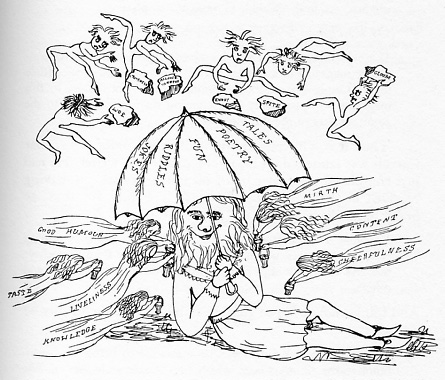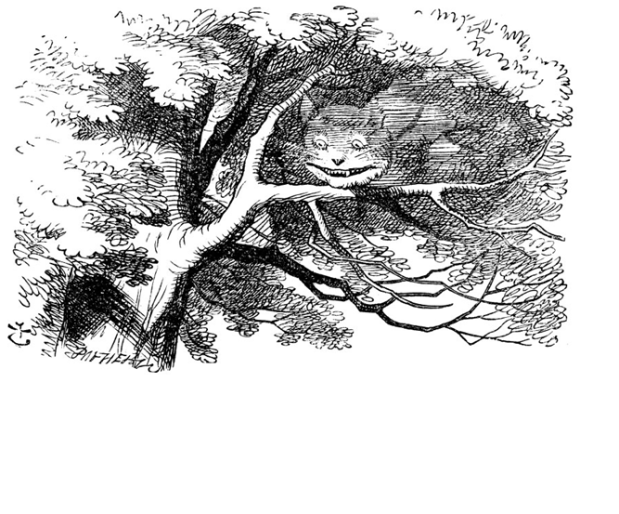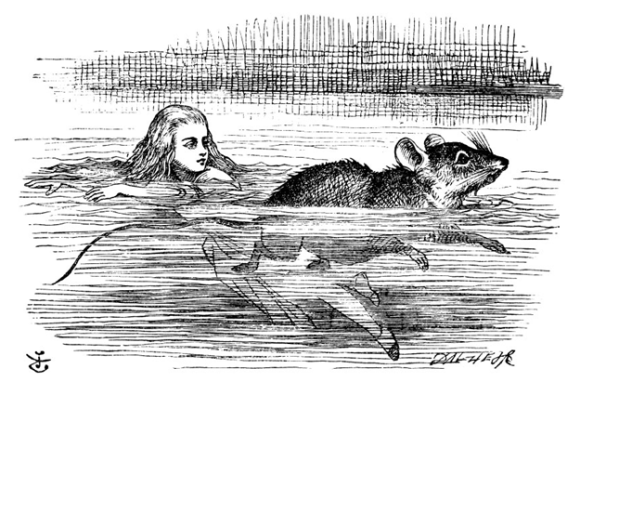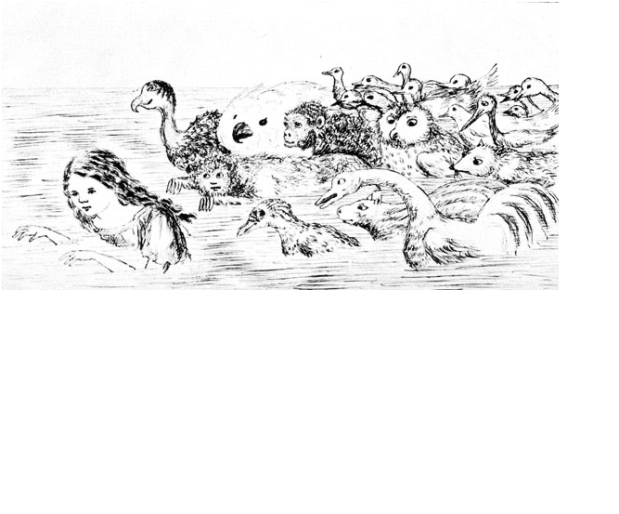பதாகை இதழில் வெளிவந்தது - (http://padhaakai.com/2015/08/25/the-two-alices/)
--------------------
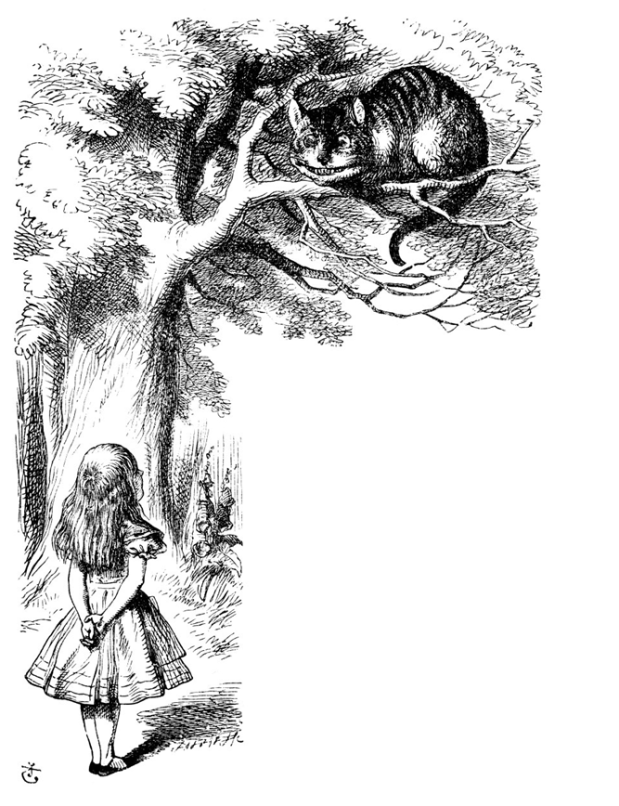
காலம் பற்றிய உரையாடல், அதை வேகமாக போகச் செய்வது அல்லது நிறுத்துவது, அப்படிச் செய்வதில் உள்ள நடைமுறைச் சங்கடங்கள் இவற்றைப் பற்றிய உரையாடல்களைக் கொண்ட “A Mad Tea Party” அத்தியாயம், தலைப்புக்கு ஏற்றார்போல், வார்த்தை விளையாட்டு, புதிர்கள், புதிரான தர்க்கங்கள் இவற்றின் பித்து நிலையில் இயங்கும் நிகழ்வுகளைக் கொண்டிருந்தாலும், அதிலும் ஒரு ஒழுங்கைத் தக்க வைத்துக்கொள்கிறது, அல்லது வாசகனை அதில் ஒருஒழுங்கைத் தேடச்செய்கிறது.
--------------------
பெரிதும் எதிர்பார்க்கப்பட்ட, ஹார்பர் லீயின் “Go Set a Watchman” நாவல் வெளிவந்து ஒரு மாதம் ஆகியுள்ள நிலையில், அதன் உள்ளடக்கம் சார்ந்த விமர்சனங்களுக்கு இணையாக/ அதிகமாகவும்கூட, அதை “To Kill a Mockingbird” நாவலின் தொடர்ச்சியாக (sequel) மட்டுமே அணுகிச் செய்யப்படும் விமர்சனங்களும் உள்ளன. பல ஆண்டுகளாக மக்கள் மனதில் பதிந்துள்ள, அவர்கள் மிகவும் அன்பு செலுத்தும் பாத்திரங்கள் இன்னொரு பரிமாணத்தில் தோற்றமளிக்கும்போது ஏற்படும் ஏமாற்றம்/ கோபம் இந்த விமரிசனங்களில் வெளிப்படுகின்றன..
“To Kill a Mockingbird” நாவலின் காலத்திற்குப் பிந்தைய காலகட்டத்தைக் கொண்டது, அதன் பாத்திரங்கள் இதிலும் வருகிறார்கள் என்பதைத் தவிர “Go Set a Watchman” உண்மையான “தொடர்ச்சி/ sequel” அல்ல என்ற புரிதலே, உணர்ச்சிவசப்பட்டு விமர்சிப்பதை தடுத்து, தனி/ standalone அல்லது ‘companion piece’ என்ற அளவில்வாட்ச்மேன் நாவலின் குறைநிறைகளைச் சமநிலையோடு அணுகச் செய்யும். . அதுவே நாவலுக்கு நியாயம் செய்வதாகவும் இருக்கும்
“Go Set a Watchman” தான் ஹார்பர் லீயால் முதலில் எழுதப்பட்டு, பின்பு பதிப்பாசிரியரின் ஆலோசனைகளின் பேரில், முற்றிலும் புதிய/ வேறுபட்ட நாவலான “To Kill a Mockingbird“ஆக உருவாகி, அது வெளிவந்து இத்தனை ஆண்டுகள் கழித்து இப்போது மூலவடிவில் வெளிவந்துள்ளது என்பது பதிப்பு வரலாறு. ஒரு நாவல் முற்றிலும் வேறொன்றாக மாறும் ரசவாதத்தை இங்கு காண்கிறோம்.
எழுத்தாளர் ஒருவருக்கு எழுத ஆரம்பிக்கும்போது இருந்த இலக்கிற்கும், அவர் வந்தடையும் இடத்திற்கும் உள்ள வித்தியாசம், இறுதி வடிவை அடையும் வழியில் ஏற்படும் திருப்பங்கள் என ஒவ்வொரு படைப்பின் பயணமும் தனித்துவம் கொண்டது.
“Alice’s Adventures in Wonderland” நாவலின் முன்னுரையில் அதற்கான விதை விழுந்த நிகழ்வைப் பற்றி லூயிஸ் கரோல்,
“All in the golden afternoon
Full leisurely we glide;
For both our oars, with little skill,
By little arms are plied,
While little hands make vain pretence
Our wanderings to guide.
Full leisurely we glide;
For both our oars, with little skill,
By little arms are plied,
While little hands make vain pretence
Our wanderings to guide.
Ah, cruel Three! In such an hour,
Beneath such dreamy weather,
To beg a tale of breath too weak
To stir the tiniest feather!
Yet what can one poor voice avail
Against three tongues together?
Beneath such dreamy weather,
To beg a tale of breath too weak
To stir the tiniest feather!
Yet what can one poor voice avail
Against three tongues together?
Imperious Prima flashes forth
Her edict “to begin it”—
In gentler tones Secunda hopes
“There will be nonsense in it!”—
While Tertia interrupts the tale
Not more than once a minute.
…”
Her edict “to begin it”—
In gentler tones Secunda hopes
“There will be nonsense in it!”—
While Tertia interrupts the tale
Not more than once a minute.
…”
என்று குறிப்பிடுகிறார். இந்த ஆரம்பத்திலிருந்து அதன் பதிப்புப் பயணத்தை நாம் பின்தொடரும்போது, அதுவும் பல திருப்பங்களை/ மாற்றங்களை உள்ளடக்கியதாக இருப்பது தெரிகிறது.
சோம்பலான மதியப்பொழுதைக் கழிக்க, தான் வாய்மொழியாகச் சொல்ல ஆரம்பித்த கதை பின்னர் அடையப்போகும் இறுதி வடிவை, பல தலைமுறைகள் கடந்தும் தொடரப்போகும் அதன் தாக்கத்தை கரோல் உணர்ந்திருக்க மாட்டார். (கடுங்குளிர் வாட்ட, மேரி ஷெல்லி மற்றும் உடன் இருந்தவர்கள் வெளியே எங்கும் போக முடியாத சூழலில், அவர்கள் விளையாட்டாக பேய்க்கதைகள் எழுதப்போக, அதனால் உருவான ஷெல்லியின் “Frankenstein“ஐ இங்கு நினைவுகூரலாம்). படகுப் பயணத்தில் நிகழ்ந்த வாய்மொழிக் கதைசொல்லல் சம்பவம் நடந்து சில மாதங்கள் கழித்து “Alice’s Adventures Under Ground” என்ற படைப்பின் பிரதியை அதன் நாயகி “Alice Lindell“க்குத் தருகிறார் கரோல். பின்னர் அதைத் திருத்தி எழுதி, கதை உருவான அந்த மதியப்பொழுதுக்கு மூன்றாண்டுகள் கடந்தபின் “Alice’s Adventures in Wonderland” நூல் வெளியாகிறது. இது இந்நூலின் சுருக்கமான பதிப்பு வரலாறு.
ஒரு குழந்தையின் ஆசையைப் பூர்த்தி செய்ய அந்தக் கணமே உருவான கதைக்கருவை (…in a desperate attempt to strike out some new line of fairy-lore,I had sent my heroine straight down a rabbit-hole without the least idea what to happen afterwards..” என்று ” ‘Alice’ on the stage” கட்டுரையில் லூயிஸ் கரோல் குறிப்பிடுகிறார்), சற்று விரித்து எழுதிய பிரதியையும், பிறகு அதன் சாத்தியங்களை உணர்ந்து விரிவாக்கிய பிரதியையும் தரத்தில் ஒப்பிடுவதோ அல்லது அவற்றிற்கிடையே உள்ள அனைத்து வித்தியாசங்களையும் பட்டியலிடுவதோ இங்கு நோக்கமல்ல. ஆனால் இரண்டுக்கும் உள்ள வேறுபாடுகளை ஒரு குறுக்குவெட்டு பார்வையில் பார்ப்பது எழுத்தாளர்களின் மனம் எவ்வாறு வேலை செய்கிறது, எப்படி திருகித் திருகி தன் படைப்பை செழுமைப்படுத்த முயன்றுகொண்டே இருக்கிறது என்பது குறித்த சில புரிதல்களைத் தரக்கூடும்.
கரோல் தானே எழுதி ஓவியங்களும் வரைந்து, வெளிக்கொணர்ந்த “‘The Rectory Umbrella” என்ற பத்திரிக்கையின், அட்டை ஓவியத்தில்
ஆறு தீய குணங்கள்/ உணர்வுகள், மேலே இருந்து வீசப்பட, விகடம்/ கவிதை/ வேடிக்கை/ கதைகள்/ புதிர்கள் போன்ற நேர்மறை உணர்வுகளாலான குடையை கவசமாகக் கொண்டு அவற்றை எதிர்கொள்கிறார் ஒருவர். இரு ஆலிஸ் நாவல்களும் இந்த நேர்மறை குணங்களைக் கவசமாகக் கொண்டு இந்தப் பணியைச் செய்கின்றன என்றாலும், “Alice’s Adventures Under Ground“ல் கதைசொல்லலின் வீர்யமே, அதிலுள்ள கற்பனையின், வலுவின் ஈர்ப்பே பிரதான அம்சமாக உள்ளது. குழந்தையை மகிழ்ச்சியடையச் செய்ய முனையும் கதைசொல்லியே எங்கும் வியாபித்திருக்கிறார். “Alice’s Adventures in Wonderland” நாவலில், தர்க்கம், விடுகதைகள், வார்த்தை விளையாட்டு, குழந்தைகளைக் கவரும் அதிசய நிகழ்வுகள் என கதைசொல்லிக்கு இணையாக, எழுத்தாளரும், தர்க்கவியலாளரும் முக்கிய பங்கு வகிக்கிறார்கள்.
இரண்டு நூல்களுக்கும் உள்ள மாற்றங்களை முதல் நூலில் எழுதிய பகுதிகளைச் செழுமைப்படுத்துதல், அப்படி திருத்தி எழுதிய நூலில் புதிதாக சில நிகழ்வுகளை/ பாத்திரங்களைச் சேர்த்தல் என்றும் பிரித்துப் பார்க்கலாம்.
மிகவும் சிறிய உருவமாகச் சுருங்கிவிடும் ஆலிஸ், தன் உருவம் அதற்கு நேர்மாறாக பெரிதாக இருந்தபோது சிந்திய கண்ணீரிலேயே மூழ்க ஆரம்பித்து, ஒரு எலி மற்றும் சில பறவை இனங்களுடன் அதில் நீந்தி வெளிவருகிறாள். “Alice’s Adventures Under Ground” நூலில், நீந்தி வெளிவந்தபின் அவர்கள் அனைவரும் கதகதப்பான அடுப்பின் முன் அமர்ந்து நனைந்த தங்கள் ஆடைகளை உலர்த்திக் கொள்கிறார்கள். கண்ணீரிலேயே ய நீந்துவது என்ற அதிசயக்காட்சிக்குப்பின் நடக்கும் இந்த உலர்த்தல் சம்பவம் அதிக சுவாரஸ்யமில்லாத, உப்புசப்பில்லாத ‘anti-climatic’ நிகழ்வாக உள்ளது.
இதை “Alice’s Adventures in Wonderland“ல் கரோல் மாற்றுகிறார். உடைகளை உலர்த்த Dodo பறவை, ‘Caucus-race’ என்பதே சரியான வழி என்கிறது. அது என்ன ‘Caucus-race’? வட்ட வடிவைப் போன்ற போட்டிக் களம், அதில் ஒன்று /இரண்டு என்றெல்லாம் யாரும் சொல்லாமல் அனைவரும் தாங்கள் நினைத்தபோது, நினைத்தபடி அங்குமிங்கும் ஓட ஆரம்பிக்கிறார்கள். .இது என்ன ஓட்டம் என்று எண்ணலாம், ஆனால் கொஞ்ச நேரத்தில் அனைவரின் உடைகளும் உலர்ந்து விட்டதே, அது போதாதா? ஆலிஸ், எலி மற்றும் பல பறவை இனங்கள் அங்குமிங்கும் ஓடித்திரியும் காட்சியை கற்பனை செய்யுங்கள். இதில் யார் வெற்றி பெற்றார் என்று எப்படி அறிவிக்க? எல்லோரும் வென்றவர்கள், அனைவருக்கும் பரிசு கொடுக்க வேண்டும் என்று Dodo பறவை தீர்ப்பளிக்கிறது. கண்ணீரில் மூழ்கி நீந்திய நிகழ்விற்குப்பின் இப்படிப்பட்ட பந்தயமும், அதன் வெற்றியாளரைத் தேர்ந்தெடுக்கும் விதமும், பரிசு வழங்குதலும்தான் பொருத்தமான முடிவாக இருக்கும் அல்லவா?
இன்னொரு இடத்தில் மிக உயர்ந்த மரத்தின் உச்சிவரை ஆலிஸின் கழுத்து நீண்டுவிட, அங்கு கூடு கட்டி இருக்கும் புறா, ஆலிஸைப் பார்த்து தான் இட்ட முட்டைகளைத் தின்ன வந்திருக்கும் பாம்பு என்று நினைத்துக் கொண்டு கத்துகிறது. தான் பாம்பு அல்ல என்று ஆலிஸ் சொல்ல, அதை புறா நம்ப மறுக்க, கொஞ்சம் நகைச்சுவையோடு கூடிய இந்த உரையாடல் “சென்று விடு” என்று புறா கடுப்புடன் கூறுவதுடன் “Alice’s Adventures Under Ground”ல் முடிகிறது. இதே நிகழ்வை “Alice’s Adventures in Wonderland“ல்
“A likely story indeed!” said the Pigeon, in a tone of the deepest contempt. “I’ve seen a good many little girls in my time, but never one with such a neck as that! No, no! You’re a serpent; and there’s no use denying it. I suppose you’ll be telling me next that you never tasted an egg!”“I have tasted eggs, certainly,” said Alice, who was a very truthful child; “but little girls eat eggs quite as much as serpents do, you know.”“I don’t believe it,” said the Pigeon; “but if they do, why then they’re a kind of serpent: that’s all I can say.”This was such a new idea to Alice, that she was quite silent for a minute or two, which gave the Pigeon the opportunity of adding “You’re looking for eggs, I know that well enough; and what does it matter to me whether you’re a little girl or a serpent?”
என்று இன்னும் விரிவாக எழுதுகிறார் கரோல். சிறுமிகள் முட்டை சாப்பிட்டால், அவர்களும் ஒரு விதத்தில் பாம்புதான் என்றும், நீ முட்டையைத் தேடுகிறாய், எனவே நீ பாம்பாக இருந்தால் என்ன பெண்ணாக இருந்தால் என்ன என்று புறா பேசும் இறுதி இரு பத்திகளில், நகைச்சுவையோடு, தர்க்கத்தையும் (புறாவின் பார்வையில் அதன் வாதம் மிகவும் சரியானதுதான் இல்லையா?) கரோல் இணைப்பது இந்த நிகழ்வை இன்னொரு தளத்திற்கு கொண்டு செல்கிறது.
“Alice’s Adventures in Wonderland” நூலில் “Pig and Pepper“, “A Mad Tea Party” என்ற இரு புது அத்தியாயங்கள் எழுதப்பட்டுள்ளன. மிளகாய் அதிகமாக உபயோகிக்கும், பாத்திரங்களைத் தூக்கி எறியும் சமையல்காரி, குழந்தையைத் தாலாட்டும் சீமாட்டி, பின்பு பன்றிக்குட்டியாக மாறும் அந்தக் குழந்தை, என விசித்திரப் பாத்திரங்கள் உலா வரும் “Pig and Pepper” அத்தியாயத்தில், காது வாயளவு நீளுமளவிற்கு இளித்துக்கொண்டிருக்கும் Cheshire பூனை மெதுமெதுவாக, வாலிலிருந்து மறைய ஆரம்பித்து இறுதியில் அதன் புன்னகை மறையும்போது, முற்றிலும் காணாமல் போவது மற்ற அனைத்து பாத்திரங்களிடமிருந்தும்/ நிகழ்வுகளிடமிருந்தும் தனித்து நிற்கிறது. மறைவது ஒரேயடியாக நிகழாமல், வாலிலிருந்து மறைய ஆரம்பிப்பது மட்டுமேகூட ஒரு வித்தியாச நிகழ்வாக இருந்திருக்கும், ஆனால் அதன் இறுதியில், “”…and ending with the grin, which remained some time after the rest of it had gone.” என்று கரோல் முடிக்கும்போது மனதில் தோன்றும் படிமம் (“புன்னகை” என்பதைத் தனி காட்சி பிம்பமாக கற்பனை செய்ய முயல்வது) ) மனதைக் கிளர்த்தக்கூடியது.
அந்தப் பூனையை ஏன் ‘Cheshire‘ பூனை என்று கரோல் குறிப்பிட்டு சொல்ல வேண்டும்? அது எந்த வகை/ இடம் சார்ந்த பூனையாகவும் இருந்திருக்கலாம், எதுவாக இருந்தாலும், கொஞ்சம் கொஞ்சமாக மறையத்தானே போகிறது? Cheshire என்ற இடத்தில் வாழும் பூனைகளின் சிரிப்பை பற்றி இங்கிலாந்தில் முன்பே ஓரளவுக்கு புழக்கத்தில் இருந்த வழக்காறுகளின் அடிப்படையில் ‘Cheshire’ என்பதற்கு அழுத்தம் கொடுக்கிறார் கரோல். இந்தப் பதத்தை கரோல் உருவாக்கவில்லை என்றாலும், இந்த நூலில் அதை உபயோகித்த விதமே “Cheshire” பூனையின் சிரிப்புடன் ஒப்பீடு செய்யும் “Grin like a Cheshire cat” போன்ற சொற்றொடர்கள் பெருமளவுக்கு உபயோகத்தில் வரக் காரணமாக இருந்தது.

காலம் பற்றிய உரையாடல், அதை வேகமாக போகச் செய்வது அல்லது நிறுத்துவது, அப்படிச் செய்வதில் உள்ள நடைமுறைச் சங்கடங்கள் இவற்றைப் பற்றிய உரையாடல்களைக் கொண்ட “A Mad Tea Party” அத்தியாயம், தலைப்புக்கு ஏற்றார்போல், வார்த்தை விளையாட்டு, புதிர்கள், புதிரான தர்க்கங்கள் இவற்றின் பித்து நிலையில் இயங்கும் நிகழ்வுகளைக் கொண்டிருந்தாலும், அதிலும் ஒரு ஒழுங்கைத் தக்க வைத்துக்கொள்கிறது, அல்லது வாசகனை அதில் ஒருஒழுங்கைத் தேடச்செய்கிறது.
கதைசொல்லலில் கரோல் செய்யும் தர்க்கரீதியான புதிர்/ வார்த்தை விளையாட்டைப் பார்க்கலாம்-
The Hatter opened his eyes very wide on hearing this; but all he SAID was, `Why is a raven like a writing-desk?’`Come, we shall have some fun now!’ thought Alice. `I’m glad they’ve begun asking riddles.–I believe I can guess that,’ she added aloud.`Do you mean that you think you can find out the answer to it?’ said the March Hare.`Exactly so,’ said Alice.`Then you should say what you mean,’ the March Hare went on.`I do,’ Alice hastily replied; `at least–at least I mean what I say–that’s the same thing, you know.’`Not the same thing a bit!’ said the Hatter. `You might just as well say that “I see what I eat” is the same thing as “I eat what I see”!’`You might just as well say,’ added the March Hare, `that “I like what I get” is the same thing as “I get what I like”!’`You might just as well say,’ added the Dormouse, who seemed to be talking in his sleep, `that “I breathe when I sleep” is the same thing as “I sleep when I breathe”!’
ஆலிஸ் சாதாரணமாக ஒன்றைச் சொல்லப்போக அதை பிடித்துக் கொண்டு அவரை March Hare/ Hatter இருவரும் வார்த்தை விளையாட்டில் படுத்தி எடுப்பதில் (அவர்களைப் பொருத்தவரை நியாயமான கேள்விகளில், ஆலிஸின் பார்வையில் விதண்டாவாதத்தில்!!) காணலாம்.
கதைசொல்லலின் நிகழ்வுகள், புதிர்/ தர்க்க விளையாட்டுகள், இவற்றில் அவர் செய்யும் செம்மைப்படுத்துதலோடு, எழுத்தாளனாக தன் உரைநடையையும் செப்பனிடுவதை, தான் கண்ட கனவைக் குறித்து தன் சகோதரியிடம் சொல்லிவிட்டு தேநீர் அருந்த ஆலிஸ் செல்ல, அப்போது அவர் சகோதரி காணும் பகற்கனவை விவரிக்கும் இரு நூல்களின் இறுதிப் பகுதி உணர்த்துகிறது.
முதலில் “Alice’s Adventures Under Ground“
But her sister sat there some while longer, watching the setting sun, and thinking of little Alice and her Adventures, till she too began dreaming after a fashion, and this was her dream:
She saw an ancient city, and a quiet river winding near it along the plain, and up the stream went slowly gliding a boat with a merry party of children on board–she could hear their voices and laughter like music over the water–and among them was another little Alice, who sat listening with bright eager eyes to a tale that was being told, and she listened for the words of the tale, and lo! it was the dream of her own little sister. So the boat wound slowly along, beneath the bright summer-day, with its merry crew and its music of voices and laughter, till it passed round one of the many turnings of the stream, and she saw it no more.
Then she thought, (in a dream within the dream, as it were,) how this same little Alice would, in the after-time, be herself a grown woman: and how she would keep, through her riper years, the simple and loving heart of her childhood; and how she would gather around her other little children, and make their eyes bright and eager with many a wonderful tale, perhaps even with these very adventures of the little Alice of long-ago: and how she would feel with all their simple sorrows, and find a pleasure in all their simple joys, remembering her own child-life, and the happy summer days.
இப்போது “Alice’s Adventures in Wonderland”
But her sister sat still just as she left her, leaning her head on her hand, watching the setting sun, and thinking of little Alice and all her wonderful Adventures, till she too began dreaming after a fashion, and this was her dream:–First, she dreamed of little Alice herself, and once again the tiny hands were clasped upon her knee, and the bright eager eyes were looking up into hers–she could hear the very tones of her voice, and see that queer little toss of her head to keep back the wandering hair that WOULD always get into her eyes–and still as she listened, or seemed to listen, the whole place around her became alive the strange creatures of her little sister’s dream.The long grass rustled at her feet as the White Rabbit hurried by–the frightened Mouse splashed his way through the neighbouring pool–she could hear the rattle of the teacups as the March Hare and his friends shared their never-ending meal, and the shrill voice of the Queen ordering off her unfortunate guests to execution–once more the pig-baby was sneezing on the Duchess’s knee, while plates and dishes crashed around it–once more the shriek of the Gryphon, the squeaking of the Lizard’s slate-pencil, and the choking of the suppressed guinea-pigs, filled the air, mixed up with the distant sobs of the miserable Mock Turtle.So she sat on, with closed eyes, and half believed herself in Wonderland, though she knew she had but to open them again, and all would change to dull reality–the grass would be only rustling in the wind, and the pool rippling to the waving of the reeds–the rattling teacups would change to tinkling sheep- bells, and the Queen’s shrill cries to the voice of the shepherd boy–and the sneeze of the baby, the shriek of the Gryphon, and all thy other queer noises, would change (she knew) to the confused clamour of the busy farm-yard–while the lowing of the cattle in the distance would take the place of the Mock Turtle’s heavy sobs.Lastly, she pictured to herself how this same little sister of hers would, in the after-time, be herself a grown woman; and how she would keep, through all her riper years, the simple and loving heart of her childhood: and how she would gather about her other little children, and make THEIR eyes bright and eager with many a strange tale, perhaps even with the dream of Wonderland of long ago: and how she would feel with all their simple sorrows, and find a pleasure in all their simple joys, remembering her own child-life, and the happy summer days.how she would feel with all their simple sorrows, and find a pleasure in all their simple joys, remembering her own child-life, and the happy summer days.
நிகழ்காலத்தில் எதிர்காலம் குறித்த பகற்கனவு, கனவில் காணும் எதிர்காலத்தில், கடந்த காலம் (அதாவது நாவலின் நிகழ்காலம்) பற்றிய நினைவுகள் /ஏக்கம் (how she would feel with all their simple sorrows, and find a pleasure in all their simple joys, remembering her own child-life, and the happy summer days. என்ற பகுதி இரண்டு நூல்களிலும் மாறவில்லை), இந்தப் பத்திகள் சொல்லும் செய்தியின் பிரதான அம்சம் பொதுவானது, அதைச் சொல்லும் விதத்தில்தான் வித்தியாசம் உள்ளது. “Alice’s Adventures Under Ground“ன் இறுதிப் பகுதி ‘ஏக்கம்’ என்ற உணர்வில் மட்டும் நின்று விடுகிறது.
“Alice’s Adventures in Wonderland” ன் இறுதிப் பகுதியில், மொத்த நாவல் குறித்த capsuleஐ- சம்பவங்கள் அனைத்தையும் ஆரம்பிக்கும் முயல் முதல், அழும் குழந்தை, போலி ஆமை- வேகவேகமாக மறையும் காட்சித் துண்டுகளாக விவரிக்கும் அதே நேரத்தில், அந்த பகற்கனவின் காட்சி பிம்பங்களுக்கான நிஜ வாழ்க்கை விளக்கங்களையும் தருவது (…the grass would be only rustling in the wind, and the pool rippling to the waving of the reeds–the rattling teacups would change to tinkling sheep- bells…), கனவும் நனவும் முயங்கும், எல்லைகள் எதுவென்று எளிதில் கண்டறிய முடியாத மாயவெளியை உருவாக்கி, வாசகனின் புலன்களை கிளர்த்துகிறது.
ஆலிஸ் இந்த எல்லைகளைப் பிரித்தறிய முடியாதவளாக, தன் கனவின் சாகச நிகழ்வுகளில் முற்றிலும் துய்க்கிறார். ஆலிஸின் சகோதரி
“So she sat on, with closed eyes, and half believed herself in Wonderland, though she knew she had but to open them again, and all would change to dull reality”
என்று அந்த எல்லைகளை உணர்ந்திருந்தாலும் “dull reality”ஐ குறிப்பிடுவது மெய்ம்மையின் போதாமையையும், அதன் வெற்றிடங்களை நிரப்பும் மாற்று-மெய்ம்மையின் ஆற்றலையும், எப்போதும் தன்பால் மனிதர்களை ஈர்த்துக் கொண்டிருக்கும் அந்த ஆற்றலின் வசீகரத்தையும் உணர்த்துகிறது.
“dull reality”ஐ சிறிது நேரமேனும் மறக்கச் செய்யும், அதிசய நிகழ்வுகள், வார்த்தை/ மொழி விளையாட்டு, புதிர்கள் இவற்றின் கச்சிதமான ஒத்திசைவோடு இருப்பதாலேயே, அனைவருக்கும் தேவைப்படும் “The Rectory Umbrella”வில் புகலிடம் தருவதாலேயே வெறும் சிறார் இலக்கியமாக மட்டும் பார்க்கப்படாமல், அனைவரையும் (அன்றாட வாழ்வின் அலுப்பைத் தன் தங்கையின் கனவில் மறக்கும் ஆலிஸின் சகோதரி முதல் உதாரணம்) ஆலிஸின் சாகசங்கள் இன்றும் ஈர்க்கின்றன.
பின்குறிப்பு:
- 1865-1866 “Alice’s Adventures in Wonderland” முதல்/ இரண்டாவது பதிப்பு வந்த பிறகும் 1897 வரை, பிரதியில் அவர் மாற்றங்கள் செய்து வந்ததாக தெரிகிறது. பெரும்பாலும் punctuation, எழுத்துப் பிழைகளைக் களைவது என இவை இருந்திருக்கின்றன என ஆய்வாளர்கள் கூறுகின்றனர். எது எப்படியோ, தன் படைப்பைச் செப்பனிடுவதில் கரோலுக்கு இருந்த தீராக் காதலை இது குறிக்கிறது.
- “Alice’s Adventures Under Ground” பிரதிக்கு, தானே ஓவியம் வரைந்த கரோல், “Alice’s Adventures in Wonderland“க் Tenniel என்ற ஓவியரை வரையச் செய்கிறார். Tenniel ஓவியங்கள் வரைந்து கொடுக்கிறார். முதல் பதிப்புக்கு பிரதிகள் அச்சாகி விட்டன. இந்த நிலையில் Tenniel தான் வரைந்ததில் முழு திருப்தி இல்லை என்று சொல்ல, கரோல் அந்தப் பிரதிகளை ரத்து செய்கிறார். பின்னர் Tennielக்கு திருப்தி தரும் வகையில் ஓவியங்கள் வரையப்பட்டபின் மீண்டும் அச்சிடப்படுகின்றன. Tennielன் பூரணத்துவத்திற்கான அர்ப்பணிப்பு இதில் ஒருபக்கமென்றால் .நூலின் எழுத்தாளனான/ செலவு செய்து பதிப்பை அச்சிடும் தனக்கு ஓவியரின் ஓவியங்கள் திருப்தி அளித்தாலும், ஓவியர் திருப்தி அடையவில்லை என்பதற்காக, பணம் இழந்தாலும் சரி என்று ஒரு பதிப்பையே ரத்து செய்த கரோலின் அர்ப்பணிப்பு இன்னொரு பக்கம். இதைக் கேள்விப்படும்போது, அவர் 1897 வரை பிரதியில் மாற்றம் செய்து வந்தார் என்ற செய்தி வியப்பளிப்பதில்லை.
ஆலிஸ் தன் கண்ணீரில் நீந்தும் நிகழ்வைச் சுட்டும் இரு ஓவியங்கள் கீழே தரப்பட்டுள்ளன. இதிலும் கரோல் வரைந்த ஓவியத்திற்கும், Tenniel வரைந்ததற்கும் வித்தியாசம் உள்ளது.
(Alice’s Adventures Under Groundல் கரோல் வரைந்த ஓவியம்.)
(Alice’s Adventures in Wonderlandல் Tenniel வரைந்த ஓவியம்.)
- 1897 வந்த – கரோல் செய்த இறுதி மாற்றங்கள் உள்ள பதிப்பை ஆதாரமாகக் கொண்டு ‘Hugh Haughton’ பதிப்பித்த “Penguin” பதிப்பிலிருந்து (இந்த நூலில் “Alice’s Adventures in Wonderland” /”Alice’s Adventures Under Ground”/”Through the Looking-Glass” மூன்றும் உள்ளன), இந்தக் கட்டுரையில் கொடுக்கப்பட்டுள்ள உரையாடல்கள்/ நிகழ்வுகளின் வர்ணனைகள் எடுக்கப்பட்டுள்ளன .

